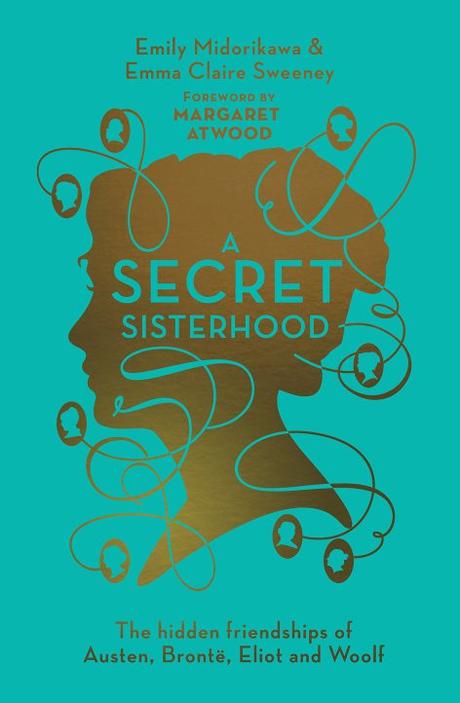 Last year this book caught my eye for several reasons, not least the beautiful cover which also graces the new paperback edition I finally got around to reading. A Secret Sisterhood by Emily Midorikawa and Emma Claire Sweeney uncovers the ‘hidden friendships’ between Jane Austen and family governess Anne Sharp; Charlotte Brontë and former schoolfriend Mary Taylor; the transatlantic rapport between George Eliot and Harriet Beecher Stowe (who never met in person) and the better known but often misunderstood relationship between Virginia Woolf and Katherine Mansfield.
Last year this book caught my eye for several reasons, not least the beautiful cover which also graces the new paperback edition I finally got around to reading. A Secret Sisterhood by Emily Midorikawa and Emma Claire Sweeney uncovers the ‘hidden friendships’ between Jane Austen and family governess Anne Sharp; Charlotte Brontë and former schoolfriend Mary Taylor; the transatlantic rapport between George Eliot and Harriet Beecher Stowe (who never met in person) and the better known but often misunderstood relationship between Virginia Woolf and Katherine Mansfield.
The close literary friendship between Midorikawa and Sweeney informs and benefits this work on every level, right back to its inspiration, and forms a bridge across the centuries (of which more later). Their joint mission was to investigate and celebrate the friendships of some of anglophone literature’s most significant and influential women, which, like so many aspects of female experience, have tended to be overlooked in favour of men’s. The seamless result of this collaboration is proof of the biographers’ passion and the value of the undertaking; it is important, illuminating and very compelling.
The Financial Times review describes this perfectly as ‘an exceptional act of literary espionage’ – the reader gets to share the reward and evident delight of the authors’ scholarly detective work when the missing pieces of each story join up, shedding new or different light on circumstances previously unknown or subject to misinterpretation. This gives each account the satisfying tension of a well-crafted piece of fiction and was such a crucial element of my enjoyment that I’m deliberately taking a wide-angle approach in order not to dilute it for anyone. It definitely doesn’t matter how much or how little you already know of the ‘characters’ or their work – you’re likely to come away wanting to seek out or revisit them regardless.
Given that even the most recent literary liaison between Woolf and Mansfield took place almost a century ago, it was essential to convey the ambience and context of each historical period and the authors certainly achieved this with ‘telling’ detail and elegant literary prose. Many of the issues faced by the women were directly related to the times they lived in but the ongoing relevance of some gives this book a surprisingly modern feel: men’s achievements, experience and ideas are still considered more important and taken more seriously than those of women, who continue to be judged on more superficial criteria and pre-conceptions. I admire the authors’ integrity and refusal to airbrush aspects of the protagonists’ behavior and personalities for which women are liable to be judged differently to men: we are no less prone to ambition and desire, envy, despair and vindictiveness. This is a book about humans, not heroines, and all the stronger for that.
My final observation, which will resonate with many who read this book as writers, concerns the timeless nature of the impulse to create and express oneself, the meaning it brings and the intense joy and pain so familiar to anyone on that path. We will never be Jane Austen or Virginia Woolf, but this book is a reminder that it’s something to be who we are, to say what we want to say, especially if we don’t have to go it alone.
This post is dedicated with love and gratitude to my wonderful literary (and all kinds of) friend Kristin Celms from Minneapolis – I would never have made it this far without her.
*POSTSCRIPT*
Next week I will be hosting a guest post by one of my Spring Spotlight authors, Ruth Figgest, writing about Mother-Daughter relationships, the theme of her debut novel Magnetism.
Advertisements &b; &b;
